10.20.11 Letting Off Steam
Dhokla (Steamed Bread)
serves 4-6
- — 1/2 cup toovar dal (split pigeon peas), washed & picked over
- — 3/4 cup raw white rice, washed and drained
- — 1/4 cup water
- — 1/2 cup plain yogurt (full or reduced-fat)
- — 1/2 teaspoon salt
- — 1/2 teaspoon baking powder
- — 2 teaspoons peanut or raw sesame oil
- — 1/2 teaspoon black mustard seeds
- — 1/2 teaspoon sesame seeds
- — 6 fresh or frozen curry leaves
Seven to 24 hours before you wish to serve the dhokla, start soaking the dal and rice. Wash them separately. Place the dal in a bowl and add water to cover by 1 inch. Place the rice in another bowl and add water to cover by 1 inch. Cover both bowls and set aside to soak for at least 6 hours, or overnight.
Drain the dal, measure out 1 cup, and place it in the food processor. Drain the rice, measure out 1 cup, and transfer to the food processor. Add the water and process until the dal and rice are well ground, a few minutes. Add the yogurt and process until smooth. The batter should be thick but pourable. Leave the batter in the processor bowl.
Organize your steaming arrangement (see details in post) and bring the water to a boil. Lightly grease an 8" round cake pan.
Add the salt and the baking powder to the batter and process briefly to mix well. Pour the batter into the cake pan to a depth of between 1/2" and 3/4" (the length of your thumbnail is a good measure).
Use oven mitts to protect your hands and arms as you set the pan in the steamer. Cover the pan and bring the water to a vigorous boil, the lower the heat just slightly to maintain a strong boil. After 5 minutes, remove the lid and wipe the underside dry, then replace it. Continue cooking until the top of the dhokla is shiny and the sides are pulling away slightly from the pan, about 15 minutes total. (The dhokla will rise and puff after about 5 minutes, but it needs more time to cook through.)
Use oven mitts again to remove the pan from the steamer. Set the pan aside for 10 minutes to set.
Use a sharp knife to slice the dhokla into 1"-diameter diamonds or squares; if the dhokla sticks to the knife as you slice, wipe the knife clean and lightly oil the blade before proceeding. Set the pan of sliced dhokla by your stovetop.
Heat the oil in a small heavy skillet over medium-high heat. Add the mustard seeds, and when they start popping, add the sesame seeds. Once the seeds have popped, about 20 seconds, toss in the curry leaves, and then pour the oil and flavorings over the dhokla.
You can serve it right away or leave it in the pan for an hour before serving. This gives it more time to gain flavor from the oil and allows the texture to firm up even more.
Serve warm or at room temperature, using a spatula to lift the squares out of the pan, and accompanied by one or more fresh chutneys.
 Download Recipe
Download Recipe
Mint-Coriander Chutney
makes about 2/3 cup
- — 2 cups packed mint leaves
- — 1/4 cup fresh lime juice
- — 2 tablespoons coriander leaves
- — 3 tablespoons sliced shallots
- — 2 teaspoons minced green cayenne chile, or to taste
- — 1 teaspoon sugar or agave
- — 1/2 teaspoon sea salt
Place all the ingredients in the food processor and process for about 15 seconds, until almost pureed. For the brightest flavor, serve immediately.
 Download Recipe
Download Recipe






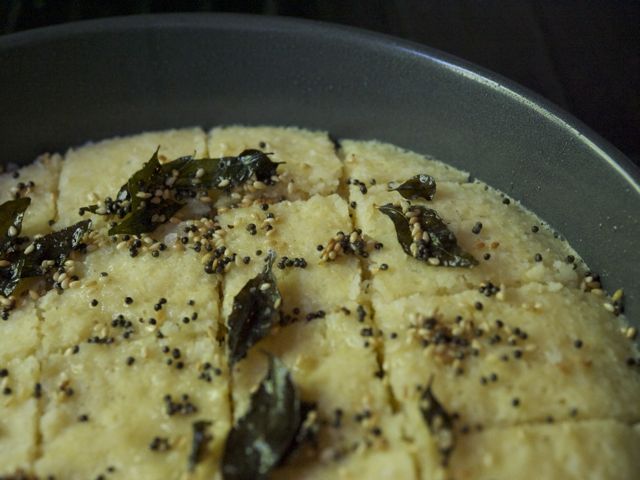
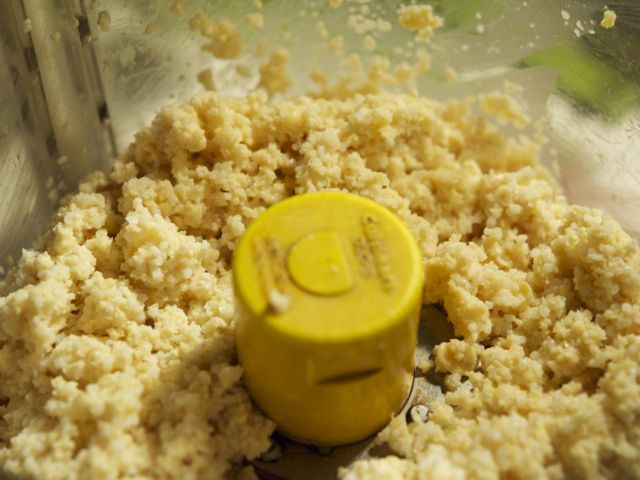
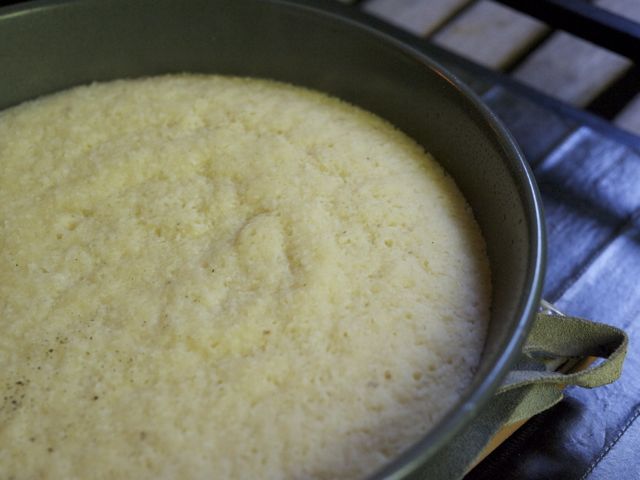

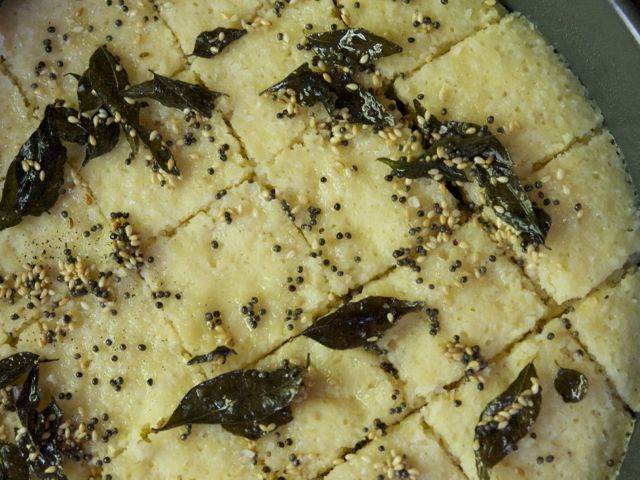
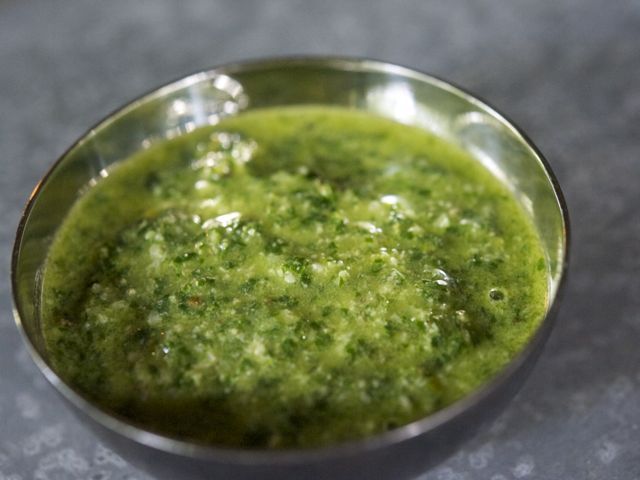
10 Comments